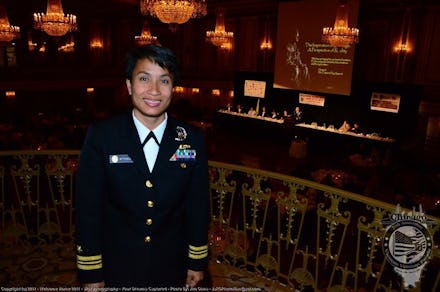U.S. Veterans Have Fought For You, Now It's Your Turn to Stand Up For Them

With 17 years’ service in the U.S. Navy, Veterans Day is very special day to me. This Veterans Day also marks the first anniversary of Alliance for Veterans, a consortium of vocal advocates for veterans and their families, of which I am a board member.
Today, while I’m pleased to welcome home our vets from Afghanistan, I’m worried about what is going to happen to them and their families over the next several years. I worry that the remarkable men and women with whom I served will be forgotten as fewer people join their ranks.
I worry that only one third of those ages 18-29 have a family member who served in the military (Pew Charitable Trusts, 2011). How will today’s socially active and savvy millennials be able to relate to veterans coming home from service at the rate of approximately 1,000 each day?
We live in a time when things keep changing, and certainly that is true for our veterans. Many are returning with both visible and invisible wounds. When the veterans experience the effects of physical injury, war trauma and traumatic brain injury, the families go through this stress, too.
In his new book, Thank You For Your Service, David Finkel writes about his experiences embedded with the Second Battalion, 16th Infantry Regiment. NPR asked Finkel why he felt these soldiers let him enter their lives and report on it in such an intimate fashion. He replied, “They hope people will have some understanding of what’s going on rather than glossing over it.”
That’s where I’m hoping my fellow Americans, especially the engaged millennial generation, can assist.
So many civilians come up to me and ask what they can do. On days like today, it’s appropriate to celebrate our veterans. But I suggest that it’s going to take a little more investment. We need to focus on three major areas: transitioning military skills into civilian occupations; ensuring ready access to health care; and linking our vets with employers to provide meaningful employment that earns a family wage. The need is not charitable; it is opportunistic. The vets simply need a lift until they can find their own way.
This can’t be done out of Washington, D.C. Federal agencies are facing more demands than they can meet. The bridge between our veterans and their successful reintegration must come from the communities. It will mimic how the U.S. turned the tide in Iraq: We only truly became effective when we began reaching out to local leaders in the provinces. Local leaders and community-based, hands-on organizations, such as Volunteers of America, Community Solutions, Dixon Center at Easter Seals, will help fill the gaps and ensure our veterans have a future.
The need doesn’t stop with the veteran. It must also extend to the veteran’s family — the parents, children and spouses who have carried on in their loved one's absence, worried for their safety, and adjusted to the return of a person who may look the same but act differently.
In the Vietnam War era, only 15% of active duty soldiers were parents, compared to nearly half (47%) today. Sixteen percent of those serving are mothers, which makes the familial need even more unique.
No Greater Sacrifice, a non-profit dedicated to the children of servicemembers killed or wounded in action, calculates the total number of children of the fallen and combat-wounded since September 11, 2011 at nearly 50,000. They further estimate that 5,821 of these children saw a parent off to war, never to see him or her again. This is your generation — and they need your support.
While November 11 is a very special day, we need to make sure every day is Veterans Day. You will be hard-pressed to find military families who regret the sacrifices they have made for this country. They have all served without question and they have made great sacrifices.
Now it’s our turn to support them. There is no better time to start than the present, this Veterans Day.